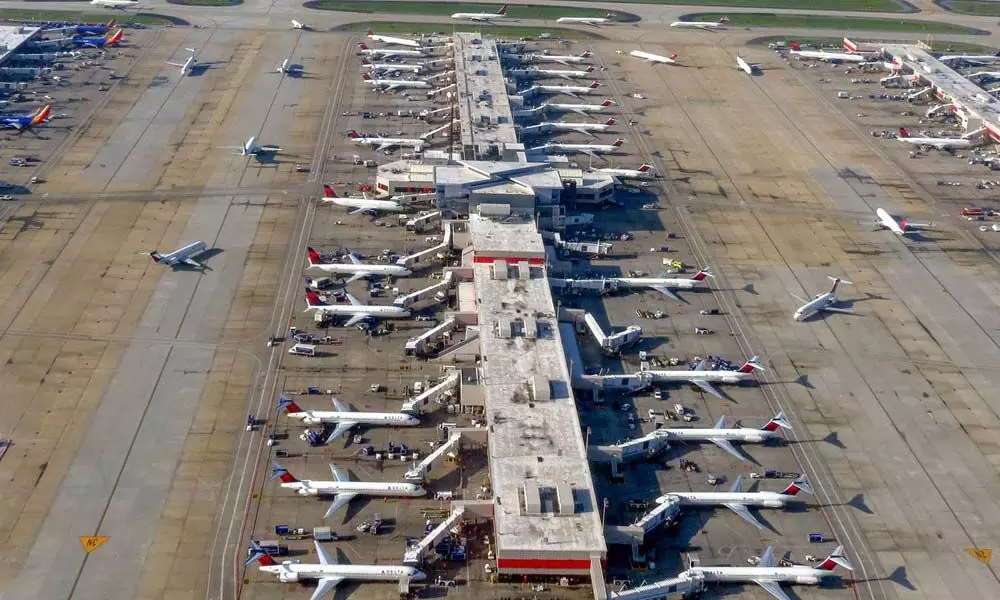Airport biz yet to take off as people shun air travel
The industry is suddenly facing a new environment where capacities are reduced and passenger demand is down for the foreseeable future. If the global situation results in prolonged lock-downs and delayed development of vaccination, airlines' financial strength will be greatly impacted and change the industry landscape
image for illustrative purpose

This sector is likely to 'lose 4.6 bn passengers and $76 bn in revenue' in 2020, says ACI World report
Covid-19 has wreaked huge damage on the world's once-booming aviation sector. Passenger numbers have plummeted and many airlines have warned they may not survive if the pandemic drags on much longer.
A recent report from ACI World noted that airports are expected to "lose 4.6 billion passengers and $76 billion in revenue" in 2020. The economic prediction highlights the struggle that the airport industry is facing and why it is critical to develop a recovery plan where passengers feel safe and confident to travel.
To boost passenger confidence and bring travelers back into airports, panelists agreed that major changes need to occur. The first was coordination with government agencies to implement Covid-19 testing and monitoring. The second was to implement technology solutions to create a touch-free experience for passengers.
Of the airport industry revenues, nearly 56 percent was from aeronautical revenue, while nearly 40 percent came from non-aeronautical revenue. Non-aeronautical revenue came mostly from retail concessions (29 per cent), car parking (20 per cent) and property and real estate income or rent (15 per cent).
The industry's largest expense items were personnel expenses (34 per cent) and contracted services (25 per cent). Overall the industry had a 66 per cent to 34 per cent operating expense to capital cost ratio.
As a significant portion of airport revenues goes to fund the much-needed capacity development once business as usual operations resume, any decrease in revenue may have a dramatic impact on airport development, and in turn on the airline business.
Before the global Covid-19 pandemic hit, the aviation industry had anticipated high passenger volume and aircraft fleet growth over the next decade. Now, however, the industry is suddenly facing a new environment where capacities are reduced and passenger demand is down for the foreseeable future. If the global situation results in prolonged lock-downs and delayed development of vaccination, airlines' financial strength will be greatly impacted and change the industry landscape.
Privately operated airports will face difficulties in keeping costs down when there is negligible revenue generation. Also, the uncertain nature of this pandemic has severely marred passenger confidence, which may take time to rebuild post-crisis. Weak passenger confidence in travel and declining economic conditions among many countries will impact the total number of passengers travelling, in both the domestic and international segments. Passenger numbers are estimated to reach pre-pandemic levels only after a couple of years.
Airlines and airports must seize digital opportunities to navigate this uncertain period and ensure the smooth re-establishment of air travel. Digital solutions will enable both airlines and airports to plan and align their resources with the sudden decline in demand; these tools will play a key role as airlines and airports scale up their operations to match the rise in travel. The aviation industry will require higher levels of collaboration between software providers, hardware providers, and master integrators to meet business requirements and provide seamless services. New technologies such as the Internet of Things (IoT) and big data analytics will play a major role at airports in optimizing operations and ensuring efficient health screening at key touch points.
The aviation sector in India currently contributes $72 bn to GDP. India has 464 airports and airstrips, of which 125 airports are owned by Airport Authority of India (AAI). These 125 AAI airports manage close to 78 per cent of domestic passenger traffic and 22 per cent of international passenger traffic.
AAI plans to invest Rs 25,000 crore ($ 3.58 billion) in next the five years to augment facilities and infrastructure at airports. The recent purchase of the Mumbai airport has put Adani in pole position. The group already has 50-year leases to operate the airports in Ahmedabad, Lucknow, Mangaluru, Jaipur, Guwahati, and Thiruvananthapuram. Collectively, these six airports along with the Mumbai airport, handled close to 80 million passengers in 2019-2020, which is approximately a quarter of India's total air traffic of 341 million.
The Covid-19 pandemic has beaten India's aviation sector and could cause turbulence for the airport industry. Airlines in the country were completely grounded for nearly two months starting March 25 when the Narendra Modi government announced a nationwide lockdown and sealed international borders to arrest the spread of coronavirus. Even as air travel reopened in May, passenger traffic hasn't gone back to normal.

